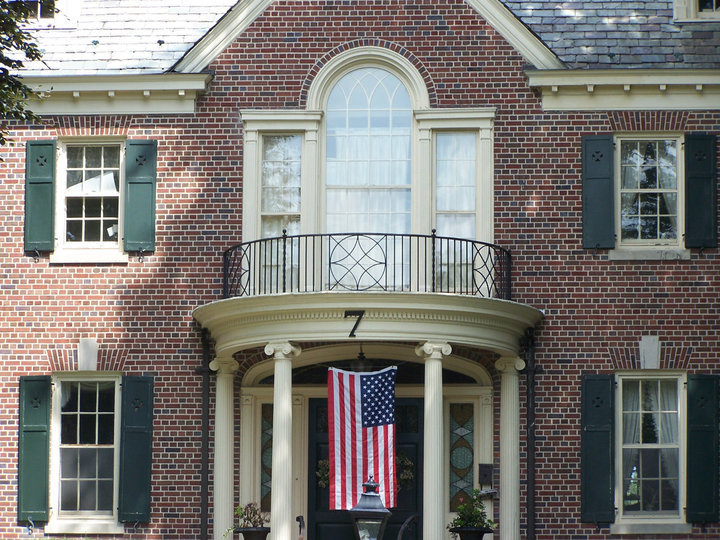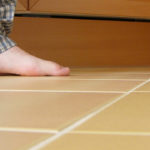The exterior of your house does more than give visitors their first impression of your home — it serves as the first line of defense against the elements. When properly cleaned and cared for, your home’s siding protects you and the investment you’ve made in the property. Over time, however, wear and weather can take their toll on siding, no matter what it’s made of. Taking the time to properly clean and care for your siding can significantly extend its lifespan, help protect the value of your home and save you thousands in repair and replacement costs.
General Cleaning Tips
Cleaning any type of siding can be as easy as using soap and water. Experts recommend using a half cup of trisodium phosphate — which can be found at most grocery stores and home improvement stores — in a gallon of warm water. However, trisodium phosphate is banned in some states, such as California, so a general cleaner can be used as well. Using a soft-bristled, long-handled brush, work in 10-foot sections and scrub your siding from bottom to top, being sure to rinse often with a garden hose. Be careful on ladders when cleaning the upper story of your house.
If preferable, you can use a power washer to save time and elbow grease, but exercise caution if you do. If you’re not careful, the intensity of a power washer can strip paint, rip caulk out of seams, blast mortar from between bricks, damage soft-wood siding and send water under joints that can lead to irreversible damage later.
You may notice black, spotty-looking stains on your siding even after you clean it. These spots are most likely mildew, but to be sure dab the area with a cloth soaked in diluted bleach. If the spot goes away, it’s mildew, and you can clean the rest of your mildew spots with a solution of one part bleach in four parts water, rinsing with clean water. You also can try using a solution of 30 percent vinegar and 70 percent water to remove mildew spots.
Caring For Wood Siding
Wood siding gives your home a classic look that other types of siding can’t equal, but it is by far the most difficult to care for. The experts recommend washing wood siding at least once a year, and they also recommend painting or staining it every five years to keep it protected. Because wood expands and contracts in response to weather conditions, you also should keep an eye on areas around windows and doors to make sure all seams are caulked and sealed.
Caring For Vinyl Siding
The durability of vinyl siding has made it the most popular type of siding sold in the United States, and for the most part, washing it once a year is all the maintenance you can expect it to need. However, you should double-check the type of cleanser you use on your vinyl siding before doing any spot cleaning. Cleansers containing organic solvents, furniture polish, de-greasers and nail polish removers can cause severe damage to vinyl siding.
Caring For Brick Siding
Brick is one of the strongest materials for home exteriors, and maintenance generally involves inspecting to ensure it is not flaking or cracking, and that mortar remains in place. When cleaning mildew spots on brick, be sure to soak it thoroughly to make it more absorptive before applying a bleach solution.
Caring for Stucco Siding
The main consideration for taking care of stucco is watching for chipping or cracking. Although it is possible for homeowners to make small repairs using store-bought fillers, large-scale repairs should be left to professionals. Work from the foundation up when cleaning stucco, as the material is likely to absorb dirty water otherwise.
Caring for your siding can go a long way to ensure your home not only looks good but also lasts a long time. A thorough inspection along with a little bit of soap and a little bit of hard work once or twice a year can save you a lot of money and strife down the road.
How Do You Know When It’s Time To Replace Siding?
Since siding is your homes number one defense against the elements, there are times when simple cleaning and care won’t cut it and your siding will need to be replaced. Replacement frequency often depends on where you live and whether any type of damage has occurred. When siding is damaged due to weather and age, it can no longer do its job and you might feel the effects in your energy costs and overall home value. Some telltale signs of damage include fading, rotting, cracking, peeling bubbling or sections of your siding can come loose. You may even see signs of mold or mildew. Aside from damage, many homeowners choose to replace siding for personal aesthetic reasons, or to increase the value of their home by updating the look. Whatever the reason, it’s always wise to ensure that you choose a reputable company that is fully insured and uses premium products.
Author bio: Richard Watkins is the founder of Aerotech Gutter Service. He has been a contractor and home remodeler for over 50 years. Watkins has completed a number of home remodeling jobs and has seen pretty much everything that can go wrong with your home.









